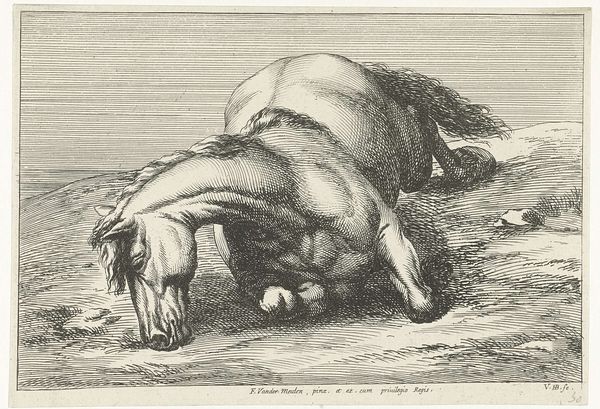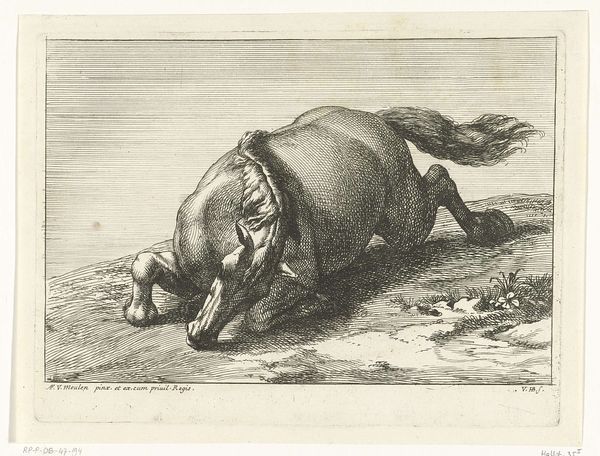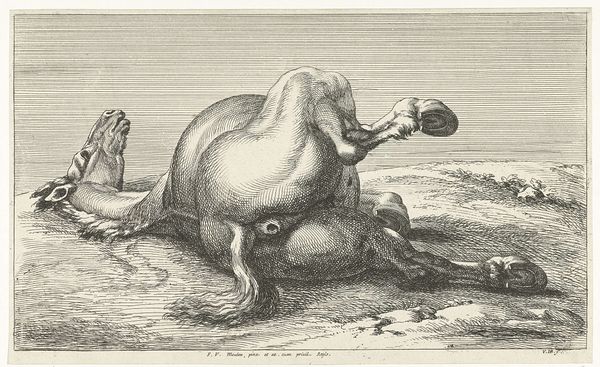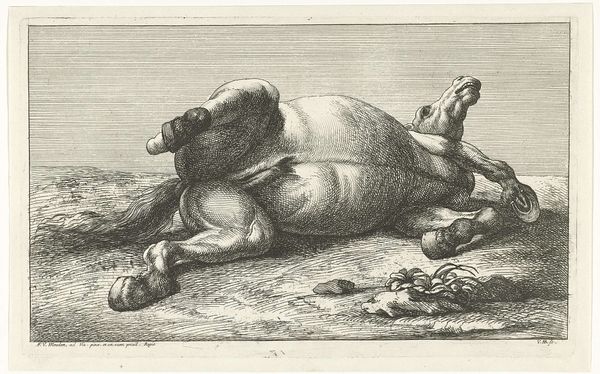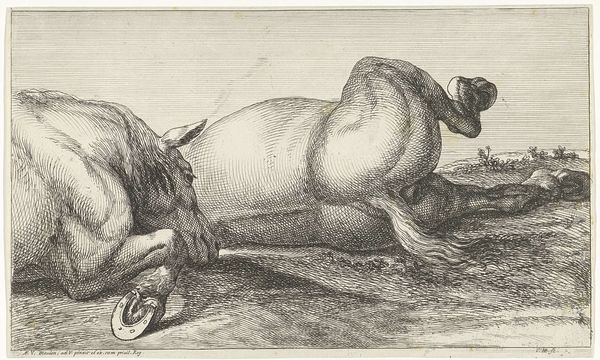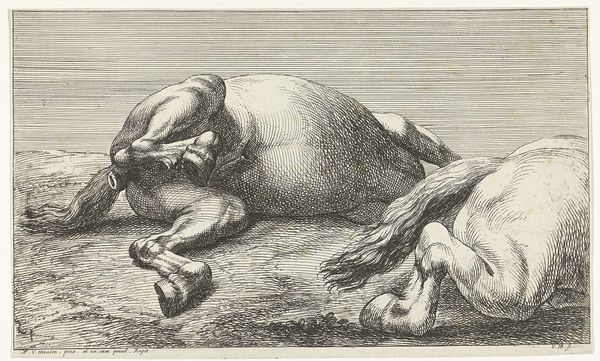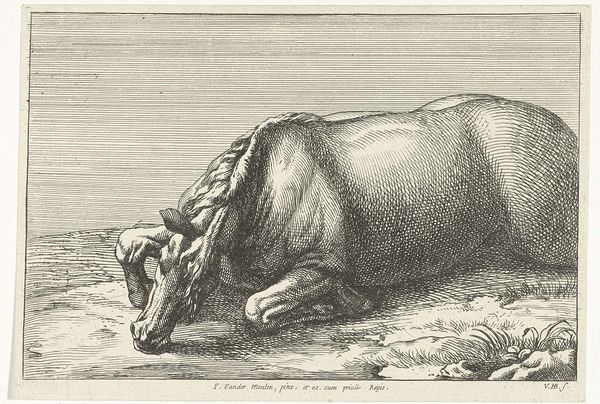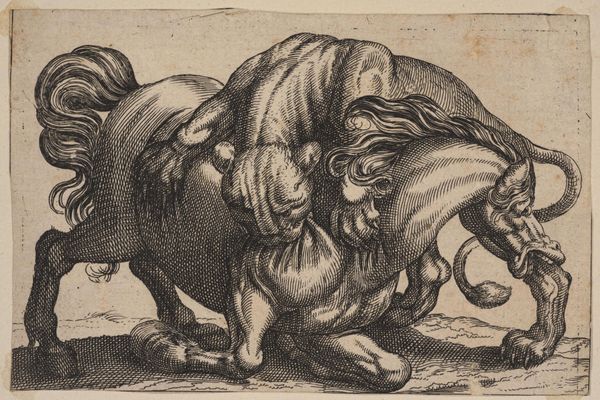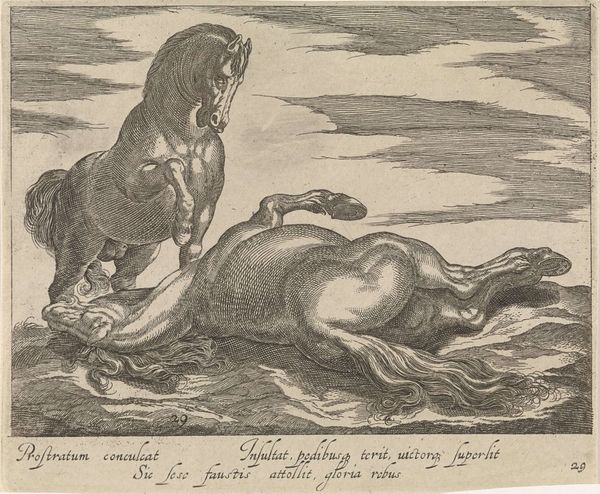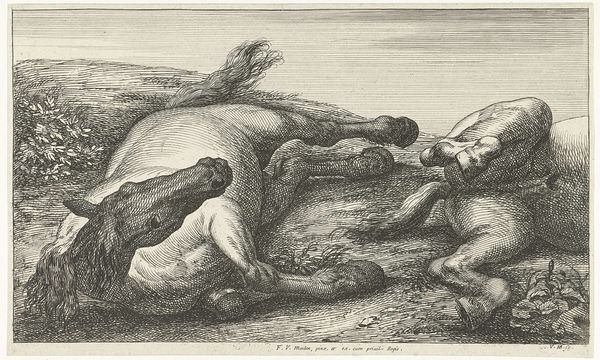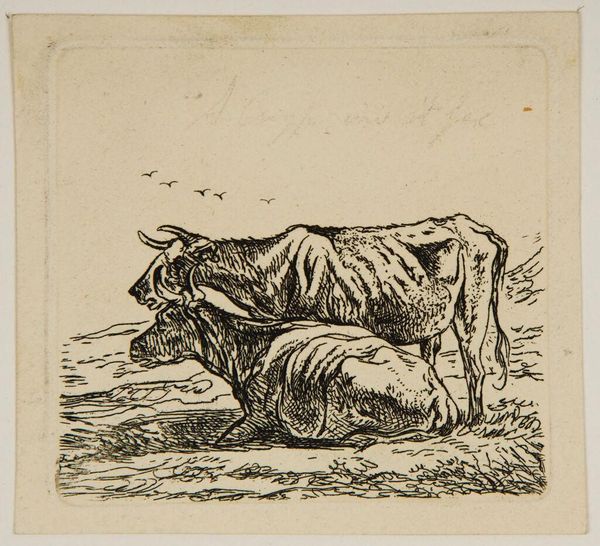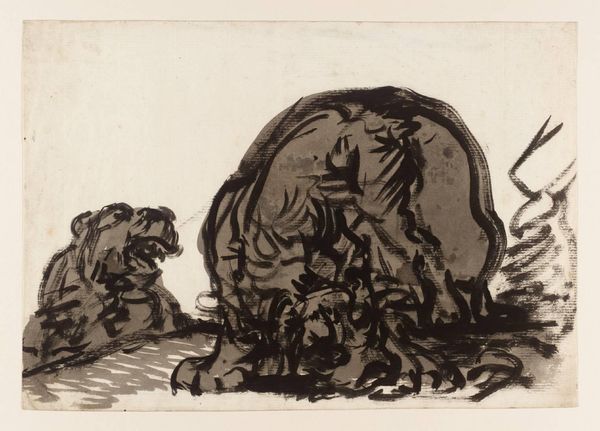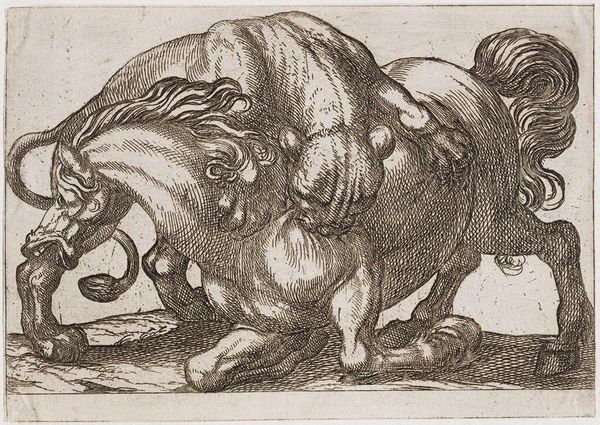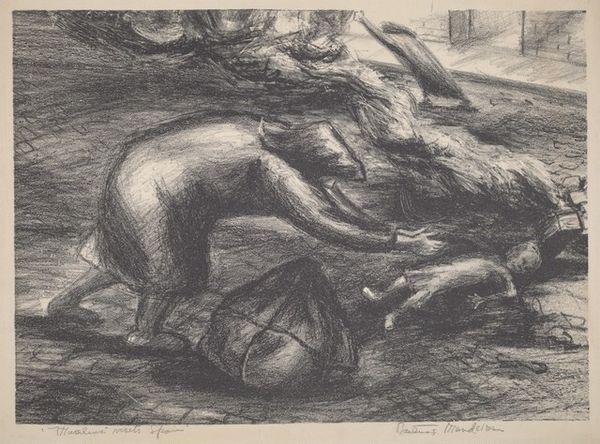
print, engraving
#
baroque
#
animal
# print
#
landscape
#
flemish
#
engraving
#
realism
Dimensions: height 191 mm, width 255 mm
Copyright: Rijks Museum: Open Domain
Jan van Huchtenburg created this print, "Fallen horse, seen from the back," sometime in the late 17th or early 18th century using etching. Huchtenburg was known for his battle scenes, during a period when the Netherlands was undergoing significant military and political shifts. Horses in battle scenes often symbolize power, status, and the glory of warfare. Yet here, the image of a fallen horse presents a stark contrast. It evokes feelings of vulnerability and loss. This subversion invites reflection on the true cost of conflict. The horse, stripped of its noble stature, becomes a symbol of defeat. Its exposed underbelly and limp limbs emphasize its helplessness. Consider the cultural context: horses were essential for transportation, agriculture, and warfare. Their mistreatment reflected broader attitudes toward labor and power. Was Huchtenburg commenting on this relationship? Perhaps, this image encourages us to reconsider the narratives of heroism and sacrifice often associated with war. What does it mean to be on the losing side?
Comments
No comments
Be the first to comment and join the conversation on the ultimate creative platform.
